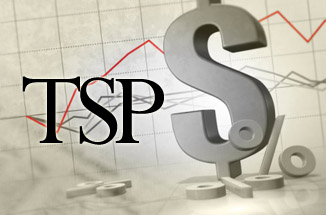
Is your TSP account ready for the next recession?
Experts on Wall Street and world financial markets have been predicting another recession, some almost daily, since the last one ended more than 10 years ago.
Experts on Wall Street and world financial markets have been predicting another recession, some almost daily, since the last one ended more than 10 years ago. And one of these days one of them is actually going to be right.
Then he or she will enjoy 15 minutes of fame — then what? Based on past performance, we are 10-plus years overdue for a major stock market correction of 20% to 30%.
Federal and postal workers are fortunate to have a defined benefit plan what will pay them a lifetime annuity with survivor benefits, based on their salary and length of service. Most current workers are also paying into and will collect Social Security benefits that are indexed to inflation. That is they go up when inflation rises but remain steady in times of deflation. Most current and retired feds also have a 401(k)-type plan (the Thrift Savings Plan) to which their employer will make a generous-by-industry-standards 5% annual contribution. Most wisely are in the TSP and all but a few put in enough to get the full match.
Still, when the last recession hit, tens of thousands of active and retired civil servants pulled their money out of the TSP’s high-risk, high-reward stock funds (C and S) and put all of their retirement nesteggs into the super-safe Treasury securities G fund. While it never has a bad day, even in the worst of times, it also never has a really good day. Over time it is usually out performed, often by a lot, by all the other investment options including the F fund (bonds). Still the fact that it doesn’t take a hit is comforting to many investors. Especially retirees and especially those under the Federal Employees Retirement System program, whose annuities do not keep pace with inflation if the cost of living exceeds 2% a year. Those who stayed in the G fund since the recession ended lost out on the big stock market gains since.
Many investors know the risk of having all their retirement nestegg in the “safe” G-fund, but they remain. Here’s a comment from a long-time fed who explains why he sticks with the G fund:
“Dear Mike C., been reading/following you for decades.
“Regarding the 1990s debacle, I was one of those who took the hit ($60,000) and have been in the G fund since. I was one of those who traded frequently trying to stay ahead of the curve. Market starts to go down, get out. Market is up for awhile, get back in. I was up substantially.
“But when the TSP went to limiting trades to two times a month it took out my ability to move back and forth. I understand TSP was never meant to be for day traders, but most of my gains came from the trading back and forth. I would have been fine if TSP had instituted a charge per transfer after a certain number per month. But I think that was counter to their vision for TSP.
“So if TSP is wondering why people have been pulling out their funds to go to other IRA-type investments, that plus TSP’s previous limits on withdrawals probably contributed to the exodus. “So I am in the G fund and will stay there. I am 72 years old and my draws should last me until I am 90.
“Oh, the new withdrawal options are an improvement. I have my regular monthly disbursement, but have made a couple of one-time draws to payoff high-interest credit cards. It reduces my payout by only about six months and the Civil Service Retirement System should make that up over time, allowing me to reduce the monthly draw. Short of a medical or some other unforeseen catastrophe, I should be OK. P.S.: In my last 10 years with the Department of Housing and Urban Development I did financial analysis/underwriting of businesses for determining the amount of federal grants, so I am probably better than many to ‘run the numbers.'” — Robert Duncan
Nearly Useless Factoid
By Amelia Brust
The first item ever bought on eBay was a broken laser pointer in 1995. Mark Fraser paid $14.83 for the item, which was listed by the site’s Pierre Omidyar.
Source: eBay
Copyright © 2024 Federal News Network. All rights reserved. This website is not intended for users located within the European Economic Area.
Mike Causey is senior correspondent for Federal News Network and writes his daily Federal Report column on federal employees’ pay, benefits and retirement.
Follow @mcauseyWFED
Related Stories





